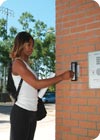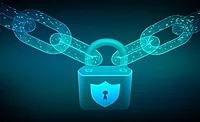Taking a Proactive Campus Approach

Access control on a mixed-use campus is an essential element.
Whether you protect a college campus or a corporate facility, developing a holistic security strategy that takes a proactive stance is a solid bet.
That’s the bottom line at a university in Mississippi. The University of Southern Mississippi serves nearly 16,000 students on the main campus in Hattiesburg, Mississippi and at five teaching and research sites on the Mississippi Gulf Coast. The Department of Residence Life at Southern Miss is committed to providing a premier physical, social and cultural environment that encourages and supports the holistic development of the residential student.
Campus Security Operation Mission
Housing nearly 3,500 students in 15 residence halls, Residence Life prides itself on the safety and cleanliness of its facilities. Hall staff dedicates time toward programs that promote the health, wellness and academic development of Southern Miss residents while assisting students in building relationships that support successful residential communities, building friendships for a lifetime and teaching life skills for citizenship within an ever-changing environment.As a result of a changing environment, more attention is directed toward the safety and security of all campus users. Progressive efforts within this realm begin with visionary communication and research at all levels. While some feel campus safety is the responsibility of a university police department, the success of any campus safety program hinges upon the communication of departmental and student needs to the campus safety department. Equally, any research regarding available technological alternatives is imperative for addressing current and future security issues.
Understanding that a college campus is a microcosm of society, the University of Southern Mississippi and the Department of Residence Life realize the value parents, students and employees place on campus safety. Southern Miss is fortunate to have leadership within the University Police Department (UPD) that integrates proactive approaches to making all who walk the campus safe. The campus police chief, dean of students and director of residence life meet regularly to discuss issues and concerns. The Residence Hall Association periodically walks the campus at night and provides feedback on areas that need more lighting or appear unsafe. UPD responds promptly with remedies.
In an effort to provide students with a more responsive department, Residence Life and Campus Safety partnered to provide an Ionit video surveillance system. This covert system, which has been installed in several residence halls, can be managed or viewed not only at UPD, but also at the hall level or anywhere on campus through the use of an IP address. This system, combined with a personal access control system, provides a superb technological team for managing building environmental and access issues.
While some may question the value of video surveillance, video has been a real asset for Southern Miss. Recently, it had a student who entered the building by “tailgating” behind another student. The desk assistant noticed this and informed the building hall director. The hall director then tracked the individual through the building using the Ionit system on his laptop. By the time UPD had arrived, he had the room number the individual entered and UPD escorted the young man from the campus. That’s just one example of how the system works.
Evaluating Technology and Telecommunications
Typically during the budget preparation period Campus Safety and Residence Life meet and plan future purchases that add to its ability to increase campus safety. Due to the cost associated with implementing these types of security features security puts together a financial plan that allows it to phase in the purchase of access control and video surveillance systems. Staff reviews historical data on incidents in different halls and decides what residence hall(s) will be targeted for these types of purchases. Once those have been chosen, staff meets with the technology department for advice and support for implementation. So in a sense, the university has created a budgeted line item dedicated to security improvements at the residence hall level.
Access control is important, as is educating students about a secure environment, according to Dr. Christopher Crenshaw.
Evolution of Access Controls in University Communities
A goal is to provide covert video surveillance in key areas of all halls. In addition, card access will be not only at the building entrance, but also at the student room entrance in all of the halls. As security plans new construction, access control and video surveillance are standard features. This fall, it will open a gated community called The Village. The project includes video surveillance at the gate entrances, card access at the building entrance, hall entrance and room entrance.While these features are helpful and can be deterrents, the biggest asset to student safety will always be the students themselves. Educating students that a secure environment is not always a convenient one is an ongoing process. Students have to understand the risk involved with allowing others to “tailgate” into a building for example. At Southern Miss there are no coed residence halls, so knowing visitation policies and recognizing when someone should not be in a hall is important. All institutions have to continue to educate students that they are security’s eyes and ears, a first line of defense to providing a safe living environment. Students, faculty and staff working together with advanced technology and good communication can go a long way toward impacting campus safety.
Advice for Other Universities
The level of safety and security on college campuses varies from institution to institution. While all are at different stages, all are also trying to improve where they are. Decisions on what to implement, where to implement and when to implement are usually driven by three variables. One is campus environment and mission. Another is upper level administration philosophy and of course the last is available resources. Whether it is video surveillance, biometrics, proximity readers or pin-coded card access, all require investigation and research as to what meets the needs of the specific situation. Fortunately, there are options.While not one campus can guarantee student safety, all desire to minimize risk and improve response to events. Through collaboration, technology, good planning and persistent education of campus constituents, colleges and universities can enhance the safety of a living-learning environment.
About the Source
Security Magazine thanks Dr. Christopher Crenshaw, director of Residence Life, at the University of Southern Mississippi for his insight on campus safety.
Looking for a reprint of this article?
From high-res PDFs to custom plaques, order your copy today!







